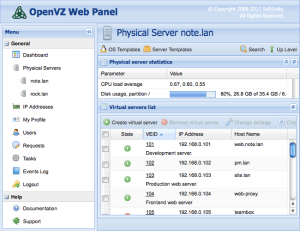[h3]1. Using the df utility[/h3]
You can use the df utility to monitor disk space on the server. It provides information about the available and used space on various file systems.
To check the free disk space, execute the following command in the terminal:
df -h
This command will show you information about the disk space allocation on the server in an easy-to-read format.
[h3]2. Using the du utility[/h3]
Another way to monitor disk space is to use the du utility. It allows you to get information about the size of directories and files on the server.
To find out the size of each directory in the current directory, execute the command:
du -h --max-depth=1
This command will show you the size of each directory in the current directory.
[h3]3. Automating the process[/h3]
For convenience, set up regular execution of the df or du utility using a cron task in the task scheduler. This will allow you to automatically monitor disk space and receive notifications if it exceeds a certain threshold.
[h3]4. Using Graphical Interfaces[/h3]
If you prefer a visual interface, there are various programs with graphical interfaces for monitoring disk space. Some of them include the following features:
- Gnome Disks: a convenient application for viewing information about disks and their usage.
- Baobab: a tool for analyzing disk space usage on the server.
Choose a graphical tool that suits you and use it to monitor disk space on the server.
[h3]5. Conclusion[/h3]
Monitoring disk space on the server is an important task that will help you avoid problems with data availability. Use command-line utilities or graphical interfaces to track disk space usage and set up regular checks to ensure effective server resource management.





